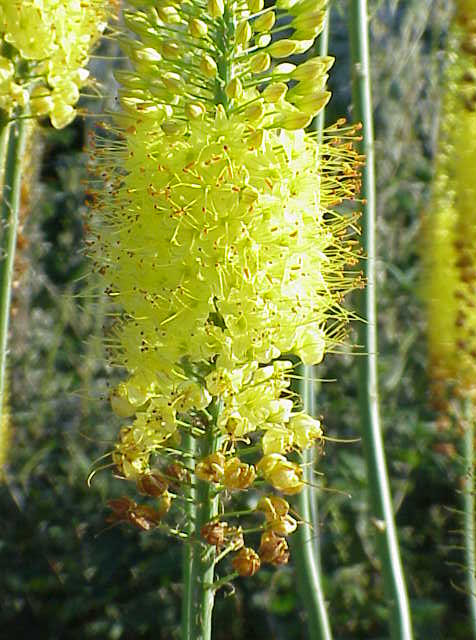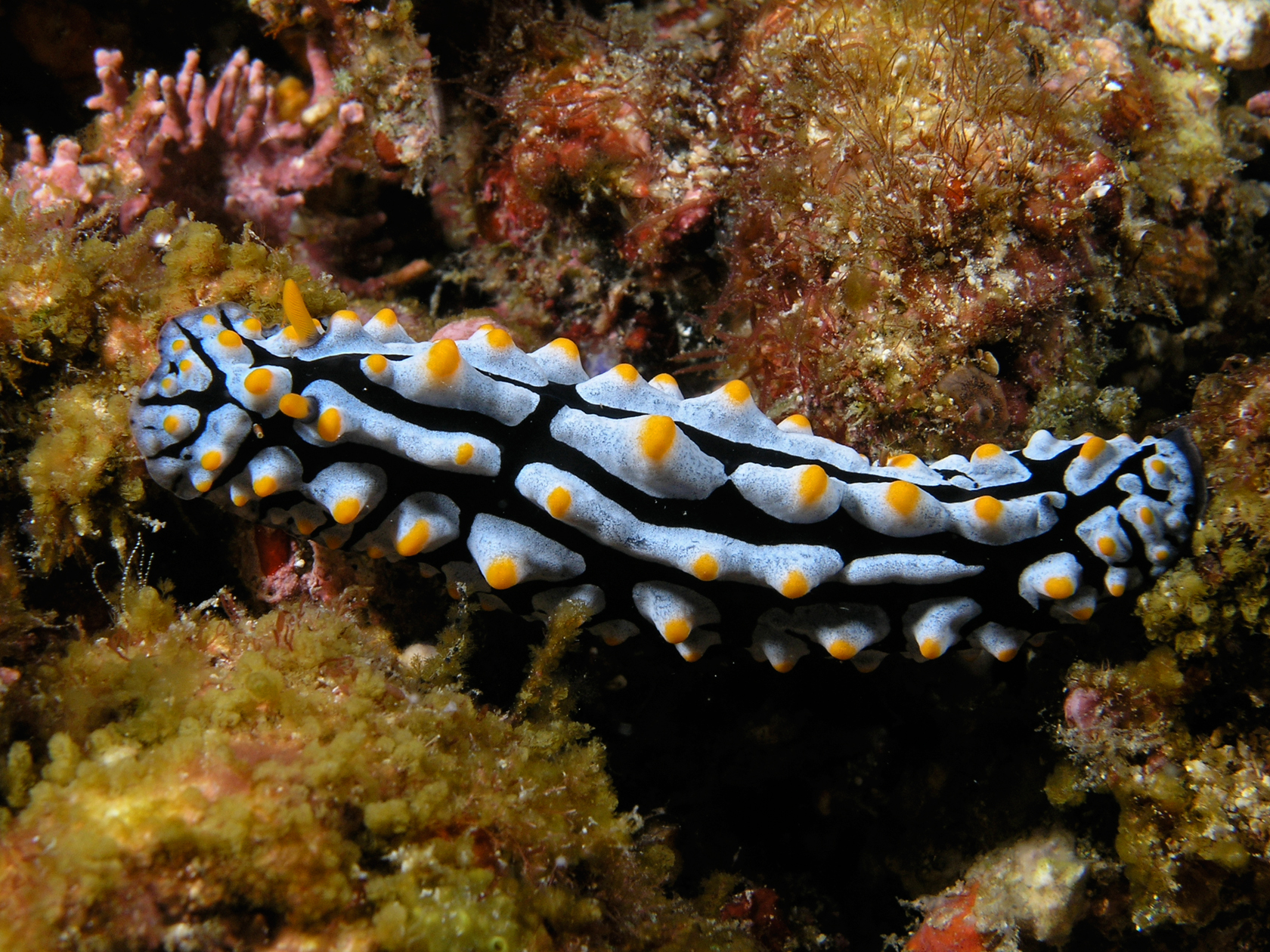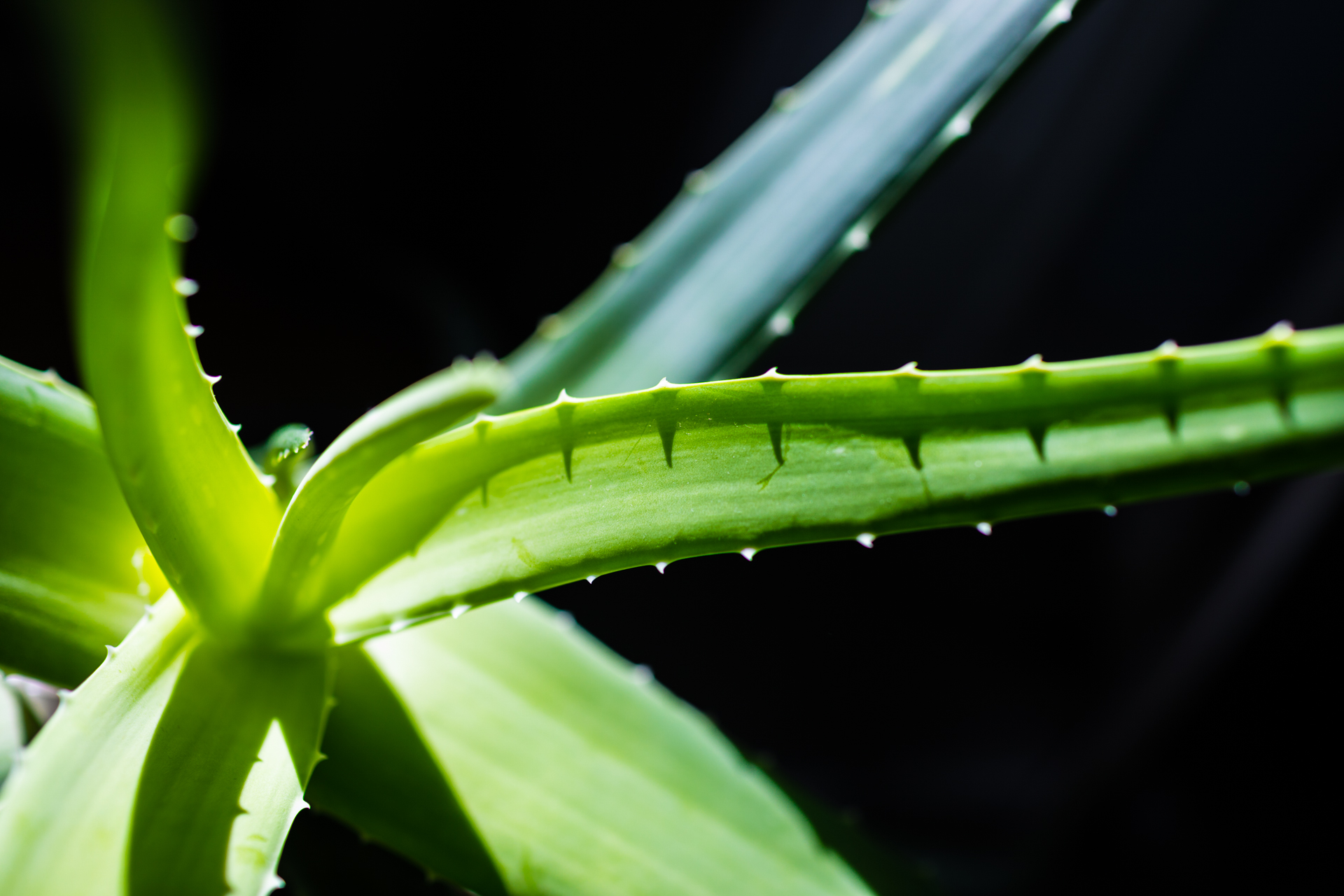|
Aloeae
Aloeae is a tribe of succulent plants in the subfamily Asphodeloideae of the family Asphodelaceae, consisting of the aloes and their close relatives. The taxon may also be treated as the subfamily Alooideae by those botanists who retain the narrower circumscription of Asphodelaceae adopted prior to the APG III system. Typically, plants have rosettes of more or less succulent leaves, with or without a distinct stem. Their flowers are arranged in racemes and tend to be either small and pale, pollinated by insects, or larger and more brightly coloured, pollinated by birds. , 11 genera are recognized, most created since 2010 by splitting off another five genera from ''Aloe'' and another two from ''Haworthia''. Only two genera, ''Aloe'' and '' Aloidendron'', are native outside southern Africa, extending northwards to the Arabian Peninsula. Seven genera are restricted to South Africa, some with small ranges. Members of the Aloeae are cultivated by succulent plant enthusiasts; ''Aloe'' ... [...More Info...] [...Related Items...] OR: [Wikipedia] [Google] [Baidu] |
Asphodeloideae
Asphodeloideae is a subfamily of the monocot family Asphodelaceae in the order Asparagales. It has previously been treated as a separate family, Asphodelaceae ''sensu stricto''. The family Asphodelaceae has now been proposed to be a nomen conservandum, and the proposal has been recommended for ratification in 2017. In that case, Asphodelaceae will have priority over Xanthorrhoeaceae. This is reflected in the APG IV family lists. The subfamily name is derived from the generic name of the type genus, ''Asphodelus''. Members of this group can be found growing native in coastal Southern Africa, Central and Western Europe, the Mediterranean basin, Central Asia and Australia; one genus, '' Bulbinella'', can additionally be found growing in New Zealand. The greatest diversity occurs in South Africa. Several genera, notably ''Aloe'', ''Asphodelus'', ''Gasteria'', ''Haworthia'' and '' Kniphofia'' are perhaps the best known of the family due to their use among plant collectors, botanis ... [...More Info...] [...Related Items...] OR: [Wikipedia] [Google] [Baidu] |
Aloe
''Aloe'' (; also written ''Aloë'') is a genus containing over 650 species of flowering plant, flowering succulent plant, succulent plants.WFO (2022): Aloe L. Published on the Internet;http://www.worldfloraonline.org/taxon/wfo-4000001341. Accessed on: 06 Nov 2022 The most widely known species is ''Aloe vera'', or "true aloe". It is called this because it is cultivated as the standard source for assorted pharmaceutical purposes. Other species, such as ''Aloe ferox'', are also cultivated or harvested from the wild for similar applications. The APG IV system (2016) places the genus in the family Asphodelaceae, subfamily Asphodeloideae. Within the subfamily it may be placed in the tribe Aloeae.Stevens, P.F. (2001 onwards).Asphodelaceae. ''Angiosperm Phylogeny Website''. Retrieved 2016-06-09. In the past, it has been assigned to the family Aloaceae (now included in the Asphodeloidae) or to a broadly Circumscription (taxonomy), circumscribed family Liliaceae (the lily family). The ... [...More Info...] [...Related Items...] OR: [Wikipedia] [Google] [Baidu] |
Asphodelaceae
Asphodelaceae is a family of flowering plants in the order Asparagales. Such a family has been recognized by most taxonomists, but the circumscription has varied widely. In its current circumscription in the APG IV system, it includes about 40 genera and 900 known species. The type genus is '' Asphodelus''. The family has a wide, but scattered, distribution throughout the tropics and temperate zones; for example, ''Xanthorrhoea'' is endemic to Australia, while the '' Aloes'' are unique to Africa and parts of the Arabian Peninsula. Many of the family's genera are cultivated as ornamentals, with some being highly collectible and sought-after, such as ''Haworthia'' and '' Gasteria'', as well as their intergeneric hybrids with ''Aloe'' ('' x Gasteraloe'', x ''Gastorthia'', x ''Haworthaloe'', etc.), while a few are grown commercially for cut flowers. Two species of ''Aloe'', '' A. vera'' and '' A. maculata'', are grown for their leaf sap, which contains digestive enzymes, an ... [...More Info...] [...Related Items...] OR: [Wikipedia] [Google] [Baidu] |
Aloe Speciosa
''Aloe speciosa'' is a species of flowering plant in the Asphodelaceae family. It is commonly called tilt-head aloe and is an arborescent aloe indigenous to the thicket vegetation of the southern Cape Provinces of South Africa. Description The tilt-head aloe is so named because of the way that its rosette tilts to one side, in the direction of the greatest sun. In its habitat, this is usually to the north (meaning that it acts as a natural compass). It is a tall arborescent aloe species, with long, thin, drooping, pale blue-green leaves, that are densely clustered around its tilted rosette. The pinkish leaf margins are lined with reddish teeth. Several short, cylindrical, single-branched inflorescences appear in the early spring, when it flowers. The dense flowers are red or green with white stripes. The Latin name ''"speciosa"'' means showy, and was actually given in reference to its ornamental flowers. The species is also known as ''Aloe hexapetala'' - also in reference to its ... [...More Info...] [...Related Items...] OR: [Wikipedia] [Google] [Baidu] |
Inflorescence
In botany, an inflorescence is a group or cluster of flowers arranged on a plant's Plant stem, stem that is composed of a main branch or a system of branches. An inflorescence is categorized on the basis of the arrangement of flowers on a main axis (Peduncle (botany), peduncle) and by the timing of its flowering (determinate and indeterminate). Morphology (biology), Morphologically, an inflorescence is the modified part of the Shoot (botany), shoot of spermatophyte, seed plants where flowers are formed on the axis of a plant. The modifications can involve the length and the nature of the internode (botany), internodes and the phyllotaxis, as well as variations in the proportions, compressions, swellings, adnations, connations and reduction of main and secondary axes. One can also define an inflorescence as the reproductive portion of a plant that bears a cluster of flowers in a specific pattern. General characteristics Inflorescences are described by many different charact ... [...More Info...] [...Related Items...] OR: [Wikipedia] [Google] [Baidu] |
Aloidendron Barberae
''Aloidendron barberae'', formerly ''Aloe bainesii'' and ''Aloe barberae'', also known as the tree aloe, is a species of succulent plant in the genus '' Aloidendron''. It is native to South Africa northwards to Mozambique. In its native climes this slow-growing tree can reach up to high and in stem diameter. An A. barberae planted at the Kirstenbosch Botanical Garden in Cape Town in 1922 had by 2011 grown to have a basal diameter (not girth) of ten feet (three meters). ''Aloidendron barberae'' is Africa's largest aloe-like plant. The tree aloe is often used as an ornamental plant. Its tubular flowers are rose pink (green-tipped); it flowers in winter and in its natural environment is pollinated by sunbirds. Taxonomy ''Aloidendron barberae'' was first collected and submitted for classification by Mary Elizabeth Barber, who was a plant collector in the former Transkei. She sent specimens of the plant and its flowers to the Royal Botanic Gardens at Kew, where in 1874 it was na ... [...More Info...] [...Related Items...] OR: [Wikipedia] [Google] [Baidu] |
Tubercule
In anatomy, a tubercle (literally 'small tuber', Latin for 'lump') is any round nodule, small eminence, or warty outgrowth found on external or internal organs of a plant or an animal. In plants A tubercle is generally a wart-like projection, but it has slightly different meaning depending on which family of plants or animals it is used to refer to. In the case of certain orchids and cacti, it denotes a round nodule, small eminence, or warty outgrowth found on the lip. They are also known as podaria (singular ''podarium''). When referring to some members of the pea family, it is used to refer to the wart-like excrescences that are found on the roots. In fungi In mycology, a tubercle is used to refer to a mass of hyphae from which a mushroom is made. In animals When it is used in relation to certain dorid nudibranchs such as '' Peltodoris nobilis'', it means the nodules on the dorsum of the animal. The tubercles in nudibranchs can present themselves in different ways: ... [...More Info...] [...Related Items...] OR: [Wikipedia] [Google] [Baidu] |
Synapomorphy
In phylogenetics, an apomorphy (or derived trait) is a novel Phenotypic trait, character or character state that has evolution, evolved from its ancestral form (or Plesiomorphy and symplesiomorphy, plesiomorphy). A synapomorphy is an apomorphy shared by two or more taxon, taxa and is therefore Hypothesis#Scientific hypothesis, hypothesized to have evolved in their most recent common ancestor. ) In cladistics, synapomorphy implies Homology (biology), homology. Examples of apomorphy are the presence of Terrestrial locomotion#Posture, erect gait, fur, Evolution of mammalian auditory ossicles, the evolution of three middle ear bones, and mammary glands in mammals but not in other vertebrate animals such as amphibians or reptiles, which have retained their ancestral traits of a Terrestrial locomotion#Posture, sprawling gait and lack of fur. Thus, these derived traits are also synapomorphies of mammals in general as they are not shared by other vertebrate animals. Etymology The word ... [...More Info...] [...Related Items...] OR: [Wikipedia] [Google] [Baidu] |
Taxa
In biology, a taxon (back-formation from ''taxonomy''; : taxa) is a group of one or more populations of an organism or organisms seen by taxonomists to form a unit. Although neither is required, a taxon is usually known by a particular name and given a particular ranking, especially if and when it is accepted or becomes established. It is very common, however, for taxonomists to remain at odds over what belongs to a taxon and the criteria used for inclusion, especially in the context of rank-based (" Linnaean") nomenclature (much less so under phylogenetic nomenclature). If a taxon is given a formal scientific name, its use is then governed by one of the nomenclature codes specifying which scientific name is correct for a particular grouping. Initial attempts at classifying and ordering organisms (plants and animals) were presumably set forth in prehistoric times by hunter-gatherers, as suggested by the fairly sophisticated folk taxonomies. Much later, Aristotle, and later st ... [...More Info...] [...Related Items...] OR: [Wikipedia] [Google] [Baidu] |
Axillary Bud
The axillary bud (or lateral bud) is an Plant embryogenesis, embryonic or Organogenesis#Plant organogenesis, organogenic Shoot (botany), shoot located in the axil of a leaf. Each bud has the potential to form shoots, and may be specialized in producing either vegetative shoots (stems and branches) or reproductive shoots (flowers). Once formed, a bud may remain dormant for some time, or it may form a shoot immediately. Overview An axillary bud is an embryonic or organogenic Shoot (botany), shoot which lies dormant at the junction of the plant stem, stem and Petiole (botany), petiole of a plant. It arises exogenously from outer layer of cortex (botany), cortex of the stem. Axillary buds do not become actively growing shoots on plants with strong apical dominance (the tendency to grow just the terminal bud on the main stem). Apical dominance occurs because the shoot apical meristem produces auxin which prevents axillary buds from growing. The axillary buds begin developing when the ... [...More Info...] [...Related Items...] OR: [Wikipedia] [Google] [Baidu] |
Apical (anatomy)
Standard anatomical terms of location are used to describe unambiguously the anatomy of humans and other animals. The terms, typically derived from Latin or Greek roots, describe something in its standard anatomical position. This position provides a definition of what is at the front ("anterior"), behind ("posterior") and so on. As part of defining and describing terms, the body is described through the use of anatomical planes and axes. The meaning of terms that are used can change depending on whether a vertebrate is a biped or a quadruped, due to the difference in the neuraxis, or if an invertebrate is a non-bilaterian. A non-bilaterian has no anterior or posterior surface for example but can still have a descriptor used such as proximal or distal in relation to a body part that is nearest to, or furthest from its middle. International organisations have determined vocabularies that are often used as standards for subdisciplines of anatomy. For example, '' Terminolog ... [...More Info...] [...Related Items...] OR: [Wikipedia] [Google] [Baidu] |
Aloe Vera
''Aloe vera'' () is a succulent plant species of the genus ''Aloe''. It is widely distributed, and is considered an invasive species in many world regions. An evergreen perennial plant, perennial, it originates from the Arabian Peninsula, but also grows wild in tropical, semi-tropical, and arid climates around the world. It is cultivated for commercial products, mainly as a topical medication, topical treatment used over centuries. The species is considered attractive for decorative purposes, and is often used indoors as a potted plant. The leaves of ''Aloe vera'' contain significant amounts of the polysaccharide gel acemannan, which can be used for topical purposes. The leaves also contain aloin, which is a toxicity, toxic compound. ''Aloe vera'' products are typically made from the gel. ''Aloe vera'' acemannan may be used in skin lotions, cosmetics, ointments and gels for minor burns, skin Abrasion (medicine), abrasions, insect bites, and windburn. Oral ingestion of aloe ve ... [...More Info...] [...Related Items...] OR: [Wikipedia] [Google] [Baidu] |






